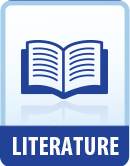|
This section contains 301 words (approx. 1 page at 400 words per page) |

|
The Eagle Summary & Study Guide Description
The Eagle Summary & Study Guide includes comprehensive information and analysis to help you understand the book. This study guide contains the following sections:
This detailed literature summary also contains Bibliography on The Eagle by Alfred Tennyson, 1st Baron Tennyson.
"The Eagle: A Fragment" was first published in 1851, when it was added to the seventh edition of Tennyson's Poems, which had itself been published first in 1842. As with the best of the poet's works, this short poem displays a strong musical sense; the words chosen, such as "crag," "azure," and "thunderbolt" not only fit the meaning of the poem but also fit the slow musical sensibility which gives the poem its thoughtful, almost worshipful, tone.
Since the title of the poem identifies it as "a fragment," the reader may be led to wonder if it represents a completed work and a completed idea. This uncertainty is enhanced by the question of what actually happens to the eagle at the end of the poem: does he become ill, somehow lose his ability to fly, and tumble helplessly into the sea, or is the poet using the term "he falls" figuratively, to portray the quick action of a powerful bird diving to scoop up its prey? The poem is too short, and offers too little background for us to tell if the sudden reversal in the last line is meant to be ironic (the frailty of the mighty eagle) or if it continues to indicate the eagle's harmony with his surroundings, so that his dive is phrased in terms of gravity. Because neither explanation seems more likely than the other, and we can assume that a powerful poet like Tennyson could have leaned his audience toward one interpretation if he had wanted to, it is fair to say that "The Eagle: A Fragment" is purposely constructed so that both interpretations apply. Tennyson wants us to see the eagle as both a swift predator and a powerful bird who is none the- less susceptible to defeat by other forces (quite possibly human).
Read more from the Study Guide
|
This section contains 301 words (approx. 1 page at 400 words per page) |

|



